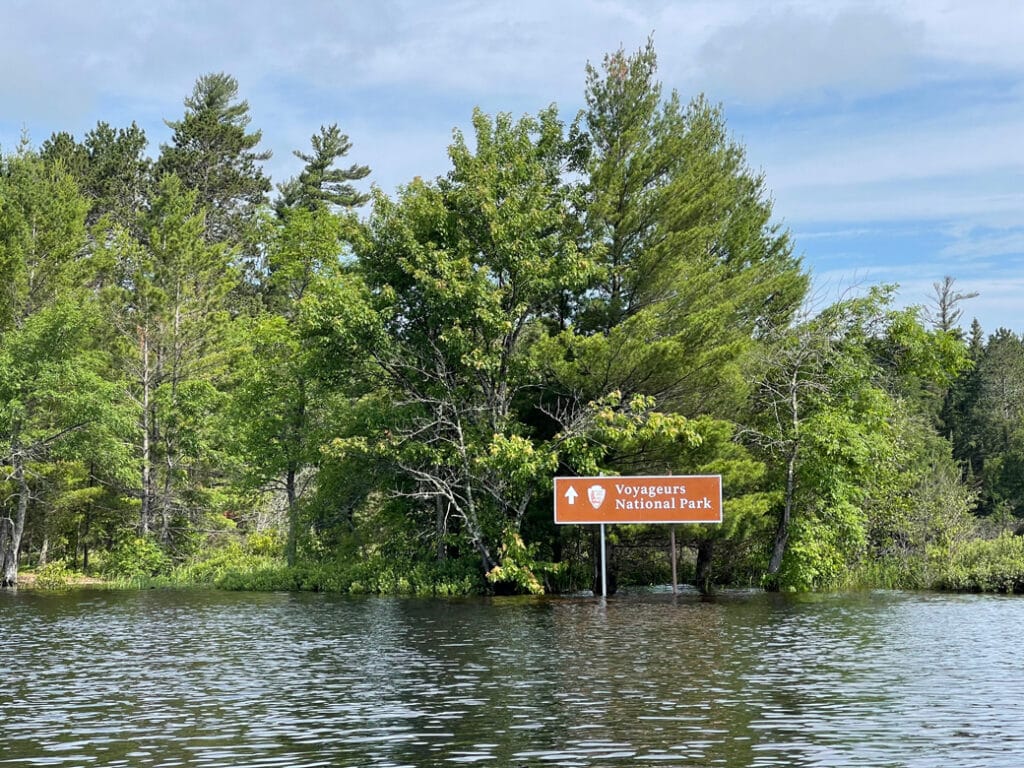
“When are we going to visit (insert the name of any national park)?” my spouse would occasionally ask. My response was usually the same, “Whenever you can find a time that it’s not crowded.” I think it’s safe to say that we’ve all experienced or heard stories of how busy our national parks can be. From the long lines to enter to the crowded trails and overlooks, these national treasures are popular with visitors, and often for good reasons.
When my husband and I take time away to get back to nature, we love nothing more than finding little slices of quiet and solitude. Being outdoors with nothing but the sounds of nature is one of our favorite things.
Last year I discovered that some of our national parks are very lightly used. Among them is Voyageurs National Park in northeast Minnesota. In 2023, the National Park Service reported fewer than 221,000 visitors to Voyageurs, with the busiest month of August welcoming just over 48,000 visitors. Compare that to the country’s most visited park—Great Smoky Mountains National Park—which saw about 13.3 million visitors last year. Even during January—its slowest month of the year—the park welcomed more than double the visitors Voyageurs sees annually. Voyageurs’ lack of popularity is part of what makes it so special.
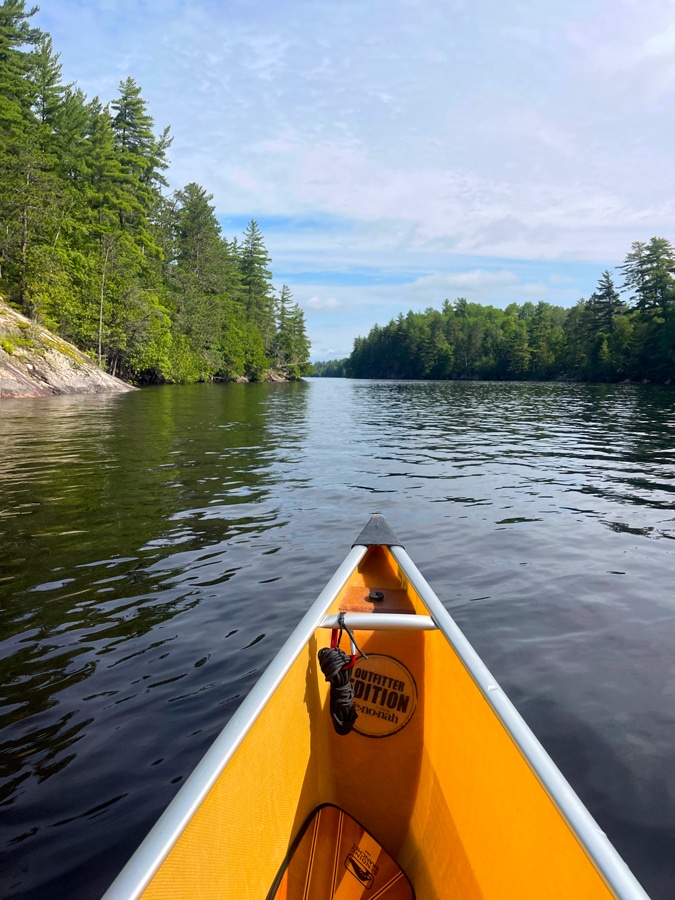
Voyageurs is unique in that it is a water-based national park. Of its 218,000 acres, 84,000 of those are water. This includes 655 miles of undeveloped shoreline and more than 500 islands. All campsites and many of the sites within the park require the use of watercraft to visit. That means extra consideration when planning a trip to Voyageurs National Park. But having just returned from a trip to Voyageurs, I assure you that the extra work to plan a trip is worth it.
In the sections below, I’ll provide an overview and additional resources to help you plan your visit to Voyageurs National Park. Then stay tuned for two additional stories where I’ll highlight a recent paddling and camping adventure as well as tips for planning a trip to Voyageurs without a watercraft. Be sure to subscribe to Wilderness News email updates here so you don’t miss more tips for planning your Voyageurs trip.
Tips for beginners
Voyageurs National Park is located in the northwest corner of the northeastern tip of Minnesota that is often referred to as the arrowhead by locals. Most of the lakes in Voyageurs—Rainy, Namakan, and Sand Point—are border lakes, meaning that the international boundary between the United States and Canada weaves its way through these massive waterways. The southeast corner of Voyageurs is bordered by the Boundary Waters Canoe Area Wilderness (BWCAW) and the three-million-acre Superior National Forest, making the entire region a wonderland of quiet, solitude, and year-round outdoor recreation.
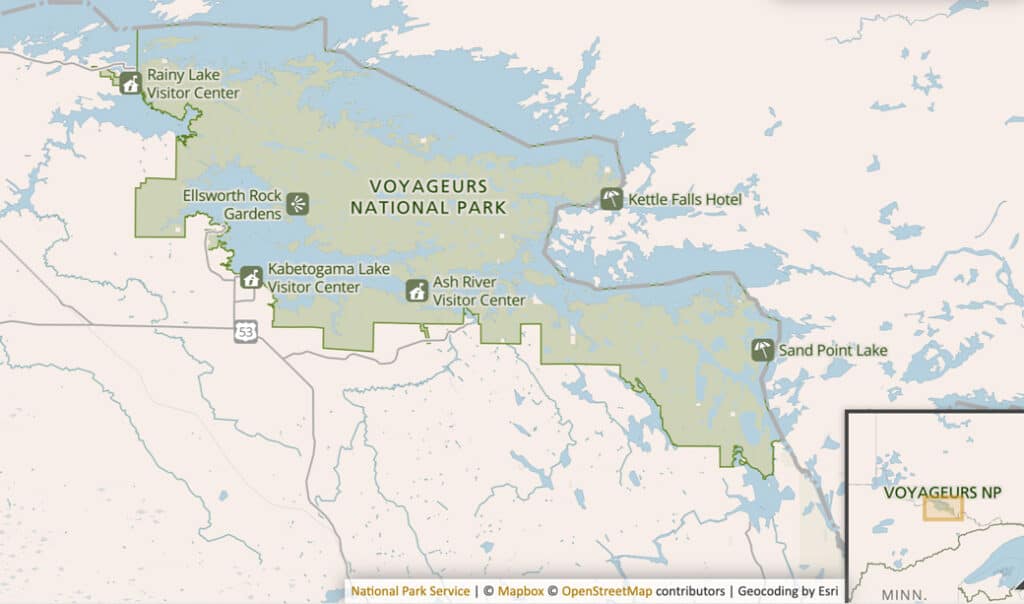
There are four entry points into Voyageurs National Park: Rainy Lake, Kabetogama Lake, Ash River, and Crane Lake to Sand Point Lake. There are visitor centers at the first three and a ranger station in Crane Lake. Check out the Maps page on the National Park Service (NPS) website to better understand the vastness of this watery wonderland. As I mentioned, Voyageurs is a water-based park so the driving distances by land can be a trek. The drive from the Crane Lake Ranger Station to the Rainy Lake Visitor Center is over 100 miles. So, you’ll want to plan what you want to see and do before you arrive.
There are no fees to visit Voyageurs National Park. If you would like to give back to Voyageurs, Voyageurs Conservancy is the official nonprofit partner of Voyageurs National Park. They do wonderful work to provide environmental education, research, and natural resource management.
When to visit Voyageurs
Voyageurs National Park is open year-round. You’ll find the most services available during the peak summer months. But the quiet and solitude of the winter months are an experience you’ll never forget. Spring in Minnesota is lovely but the weather is unpredictable making it difficult to plan in advance. You can learn more about the weather in Voyageurs here.
While I love the quiet, solitude, and beauty of Minnesota winters, I find them a bit long. Summers are heavenly, but the bugs can be a bit much. I find myself outside all year long but if I had to pick a favorite time, I’d pick September and October. The weather can be cool, you’ll likely see rain, and maybe even a snowflake or two. But you’re almost guaranteed that most of the bugs are gone for the year, as are the crowds. You’ll notice the nights getting longer day by day and be rewarded with epic star gazing and if you’re lucky, catch a glimpse of the northern lights. The fall colors in this part of the state are phenomenal and peak between mid-September and early October. You can learn more about chasing Minnesota fall colors here.
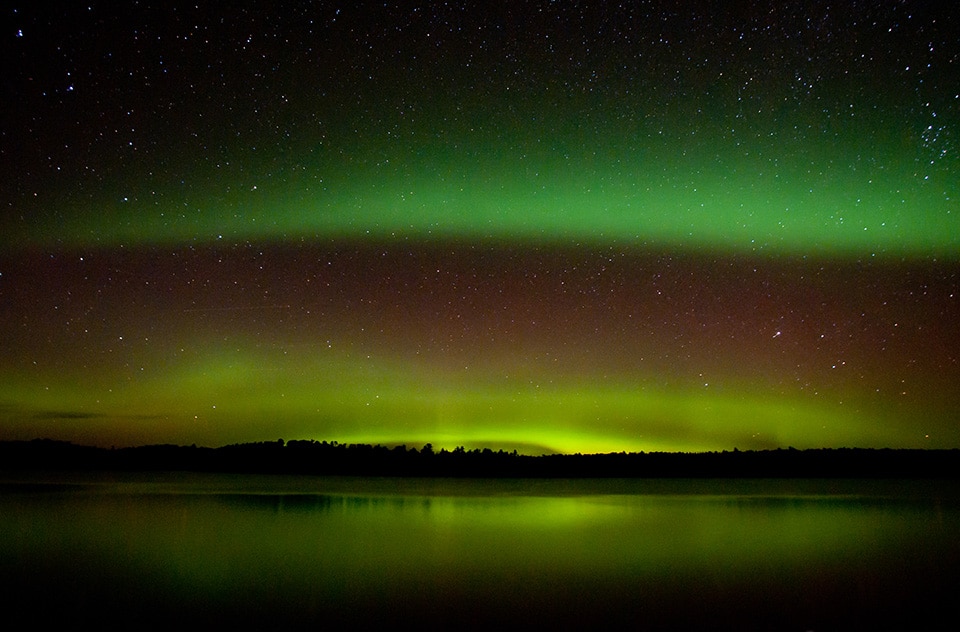
What to do in Voyageurs National Park
Visitor Centers
Visitor centers are a great place to start any national park tour and Voyageurs has three. The Rainy Lake Visitor Center is open year-round but the hours vary with the season. Here you will find a staffed information desk, exhibits, and a theater for viewing the park film. If you visit in the winter, ski rentals may also be available. It’s always helpful to call ahead. The Kabetogama Lake Visitor Center is open during the summer and winter and offers many of the same features you’ll find at Rainy Lake. Finally, the Ash River Visitor Center is only open during the summer. You can find information on all the visitor centers here.
Hiking
Just because Voyageurs is a water-based park doesn’t mean it lacks great hiking. You can access spectacular trails by both land and water. You can learn more about all of the trails within Voyageurs National Park here.
A sucker for Norway Pines and wild blueberries, the Blind Ash Bay Trail is one of my favorites. If time allows, a six-and-a-half-mile boat ride will bring you to the Mukooda Trail. Completed in 2020, the Mukooda Trail is a great way to experience the landscape of northeast Minnesota. Be sure to read the interpretive signs about Mukooda Lake and learn more about its ancient inhabitants. Don’t miss the short spur to the remains of the Filben Cabin and learn more about what Mukooda must have been like during Prohibition.
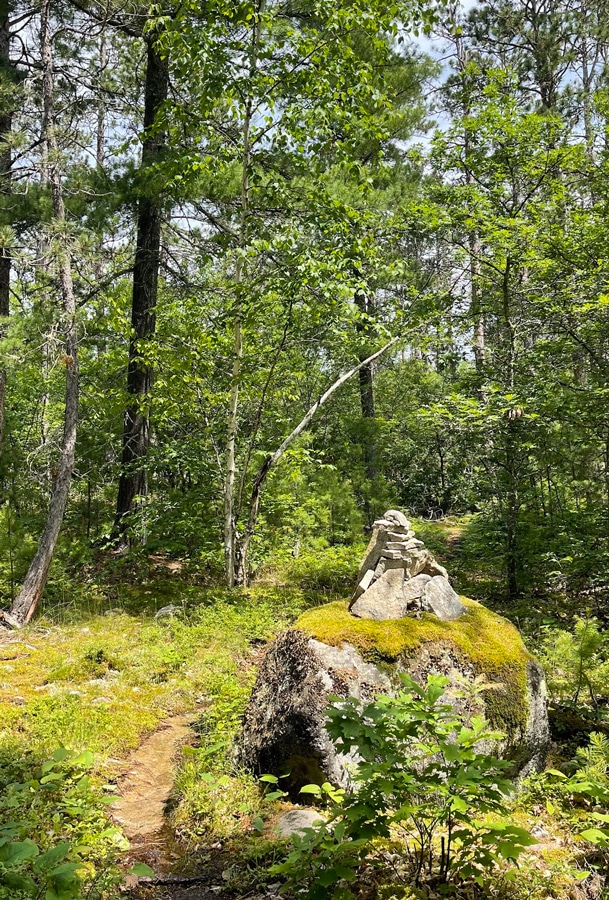
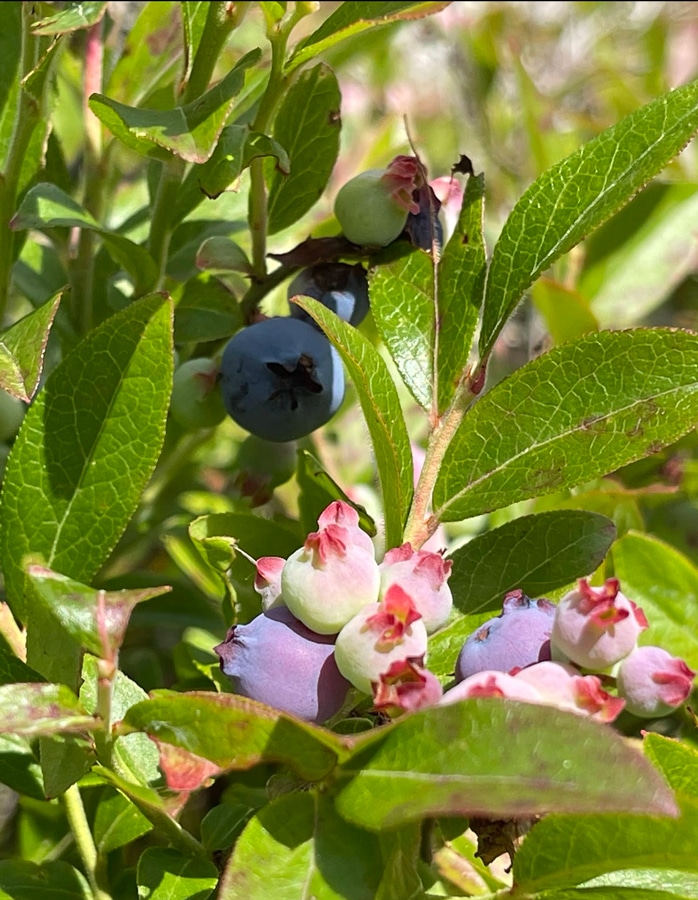
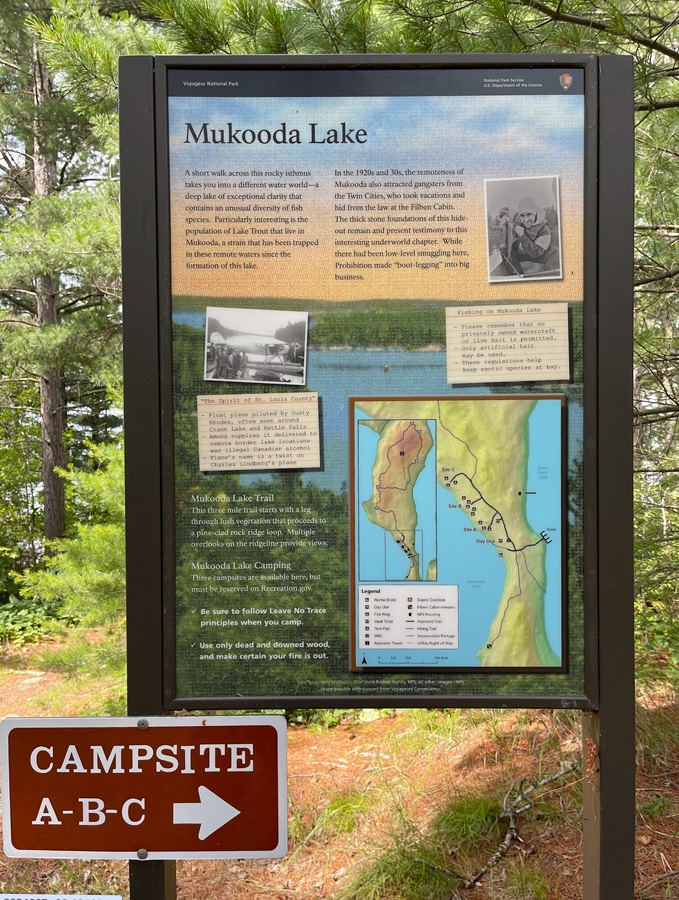
Get out on the water
You can’t visit Minnesota—the land of 11,842 lakes—without getting on the water. Whether you prefer swimming, paddling, boating, fishing, or a guided tour, you must experience the lakes of Voyageurs. You can find a list of commercial services and guides recommended by the NPS here. And learn more about guided tours offered by the park here.
Wildlife viewing
I never realized how abundant and diverse the wildlife is in Minnesota until I started traveling. Living a short walk from the Mississippi River, we see bald eagles, peregrine falcons, owls, foxes, beavers, and coyotes regularly. And the wildlife in Voyageurs is even more spectacular. On our most recent visit, we had a family of loons that circled our island campsite, sounding warning cries every time the resident eagle left its nest for a hunt. A friendly hummingbird visited us each morning and we even saw a turtle lay her eggs right on our island. At the end of our trip, we followed fresh moose tracks on a hike to one of northeast Minnesota’s best-kept secrets.
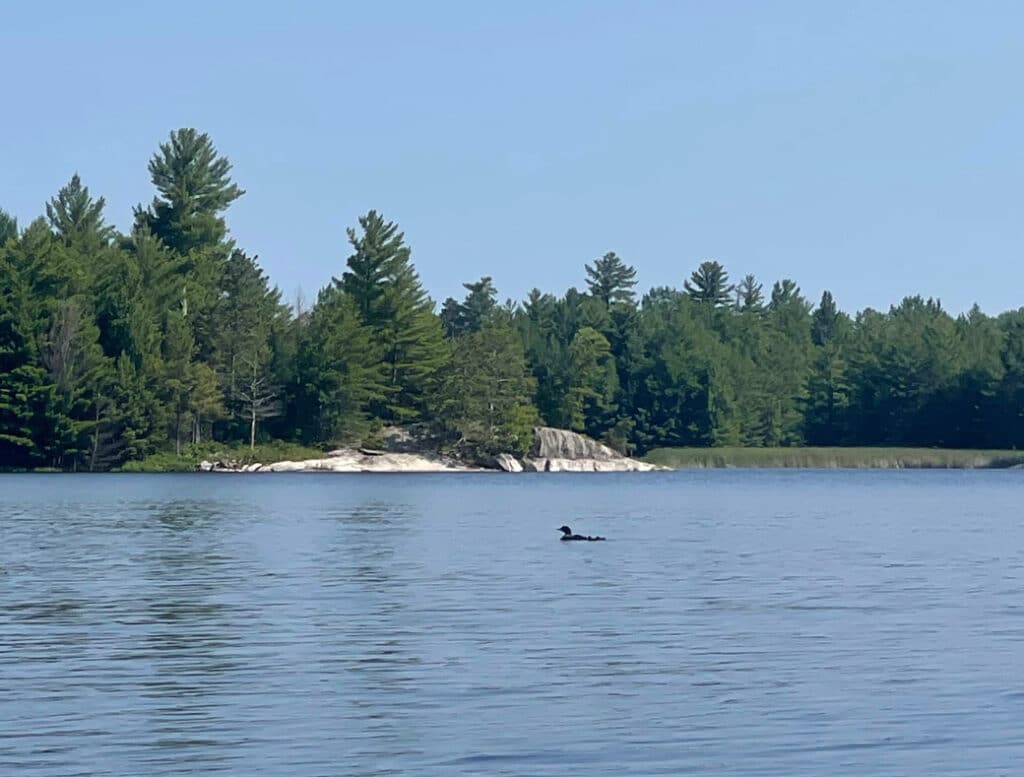
Dark skies and northern lights
Another thing we’re spoiled with here in Minnesota is the dark skies that are perfect for stargazing, astrophotography, and viewing the northern lights (aurora borealis). Keep in mind, however, that the days get long during mid-summer in northern Minnesota. When we camp during those months, it’s still light out when we go to bed and the sun is strong by the time we get up. For me, the best time to see the northern lights is during the fall and winter. If you’re a fan of the night sky, you won’t want to miss the annual Voyageurs Star Party.
Winter activities
As I mentioned, winter is a great time to visit Voyageurs. With the right clothing, you’ll find there’s so much to do: skiing, snowshoeing, ice fishing, and more. You can learn more about winter safety here. And join one of the winter events here.
Tips for camping in Voyageurs
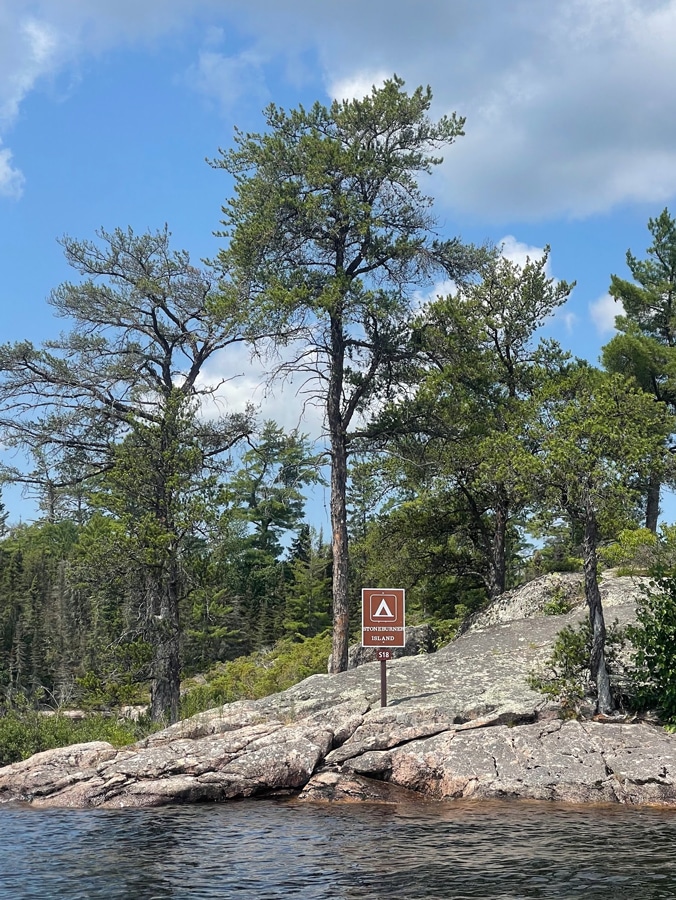
I’ll cover camping in Voyageurs in-depth in another article specifically about paddling and camping in Voyageurs National Park. Be sure and subscribe to Quetico Superior Wilderness News so you don’t miss an update. In this article, I’ll briefly cover the basics you need to know before planning a camping trip to Voyageurs.
Voyageurs has both frontcountry and backcountry campsites. In most national parks, frontcountry refers to campsites that you can drive to in developed campgrounds. In Voyageurs, all frontcountry campsites are only accessible via watercraft. There are 137 frontcountry sites located on the four main lakes—Rainy, Kabetogama, Namakan, and Sand Point.
Backcountry campsites in Voyageurs are located on the interior lakes of the park. They require the use of watercraft to get to designated trailheads. When you reach the trailhead, you will leave your watercraft behind and transport your gear by foot. Some of the backcountry lakes have rental canoes that can be reserved for overnight and day use. You can find the rates for campsite and canoe rentals here. To prevent the spread of invasive species, you must never portage your own watercraft into any backcountry lake.
Rules and regulations
Always practice Leave No Trace. In brief, the seven principles are: 1 – plan ahead and prepare, 2 – travel and camp on durable surfaces, 3 – dispose of waste properly, 4 – leave what you find, 5 – minimize campfire impacts, 6 – respect wildlife, 7 – be considerate of other. If you pack it in, you’re required to pack it out. Accidents happen and we’ve all left things behind or have had something fall out of our pockets. So, it’s a best practice to help one another out and pack out anything you find that isn’t part of the natural environment. When you leave a campsite or recreation area, it should always look better than you found it.
Build campfires only in metal fire rings. Never leave a campfire unattended and always drown campfires before bed or leaving your campsite. Ashes must be cool to the touch. Only use dead and downed wood or bring in firewood from a DNR-approved vendor. Chainsaws are prohibited as is the burning of trash.
Black bears are active in the area. Always store your food and trash in the bear boxes provided or hang it. While we’ve never had a bear seek out our food or trash, we’ve had mice and chipmunks get into bear boxes and packs. Learn more about bear safety in Voyageurs here. You can find all of the park rules and regulations here.
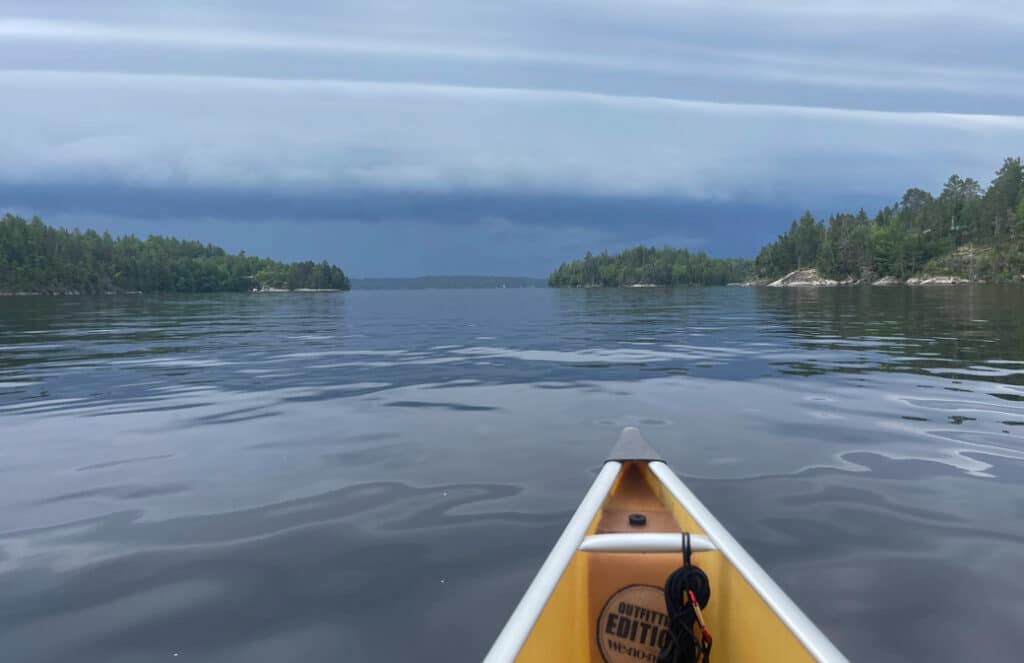
Staying safe
Weather in northeast Minnesota can change rapidly. On a recent trip, we had unexpected thunderstorms roll in each afternoon, and while we were paddling out. Study the forecast before you go and while you’re out, keep an eye on the sky, especially if you’re on the water.
Know the basics of lake navigation before you go and don’t be afraid to cut a trip short if you’re not certain you can get to your destination or find your way back. Always carry a physical map and compass. We carry one per person and a GPS device. When you’re on the water, always wear your PFD (personal floatation device).
Always carry a first aid kit and know how to use it. If you spend any time outdoors and in remote locations, it’s a good idea to get certified in Wilderness First Aid. If you can’t make it to a class before your trip, the American Red Cross has a fantastic app that works even when you’re off the grid.
Be prepared for ticks and mosquitoes from May through October. While mosquitoes are most active from June to August, disease-carrying ticks are active from snowmelt through mid-summer and become active again in September and October. Since I spend so much time outdoors, I have a set of clothes that are treated with permethrin and haven’t found a tick in years. Always do a tick check before bed. You can learn more about ticks in Minnesota here.
If you’re still reading after getting the creepy crawlies, don’t forget about the sun. You might not expect it, but the sun is strong mid-summer in Minnesota. It’s especially potent when you’re on the water. Carry sunscreen and wear sun-protective clothing. And don’t forget to drink plenty of water.
Voyageurs National Park is the epitome of Minnesota summer—and winter—fun. One of the least visited and most serene national parks, it’s a true hidden gem. By following the tips in this beginner’s guide, you’re sure to enjoy an epic and safe adventure.

Holly Scherer is a Minnesota-based writer, photographer, outdoorswoman, and guide. She’s most at home in the great outdoors; camping, hiking, paddling, cycling, and gardening. When she’s not on an adventure, she and her husband live in the Twin Cities where they’re fond of saying, “home is where we store our outdoor gear.”

